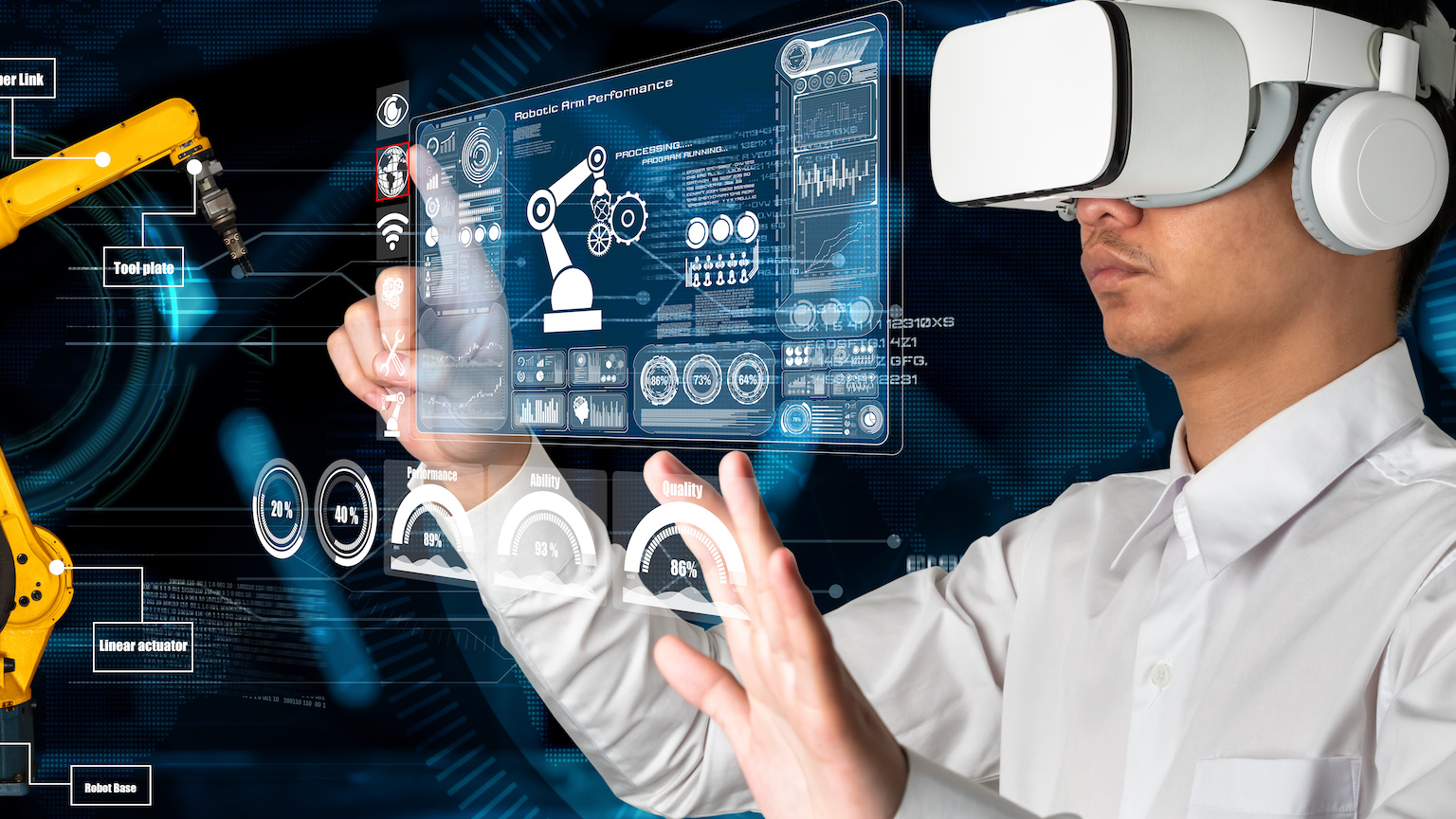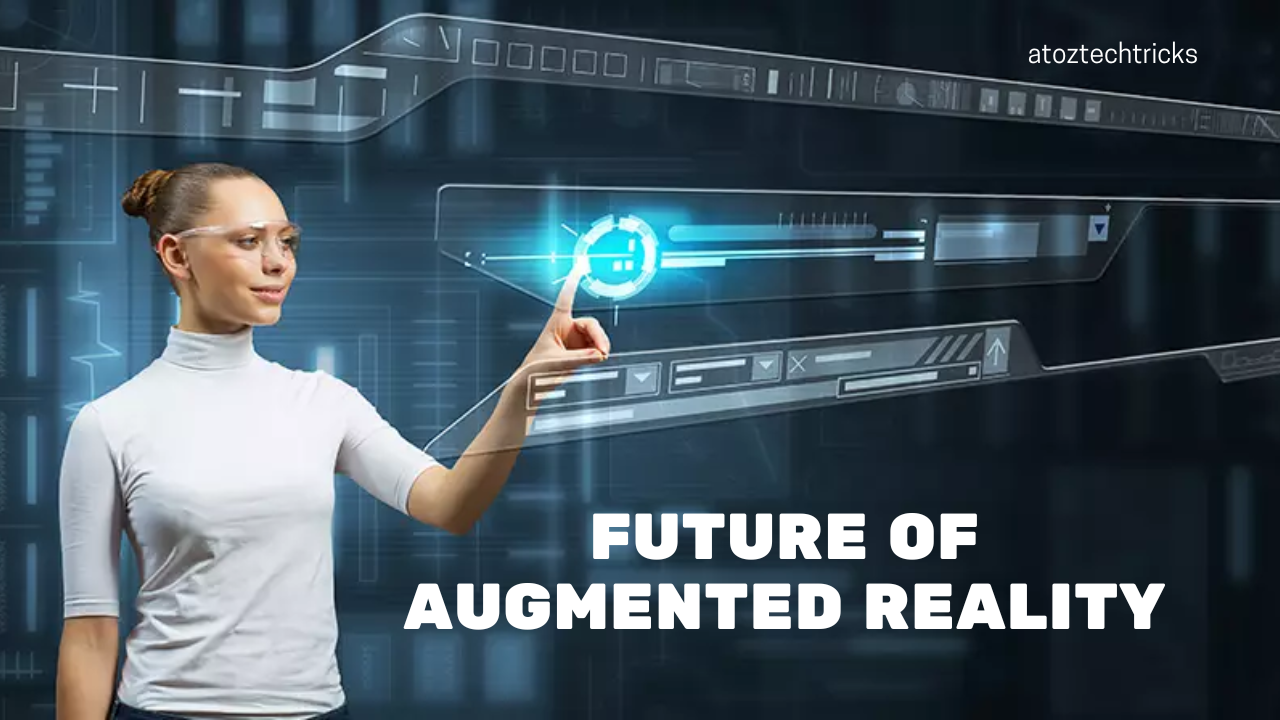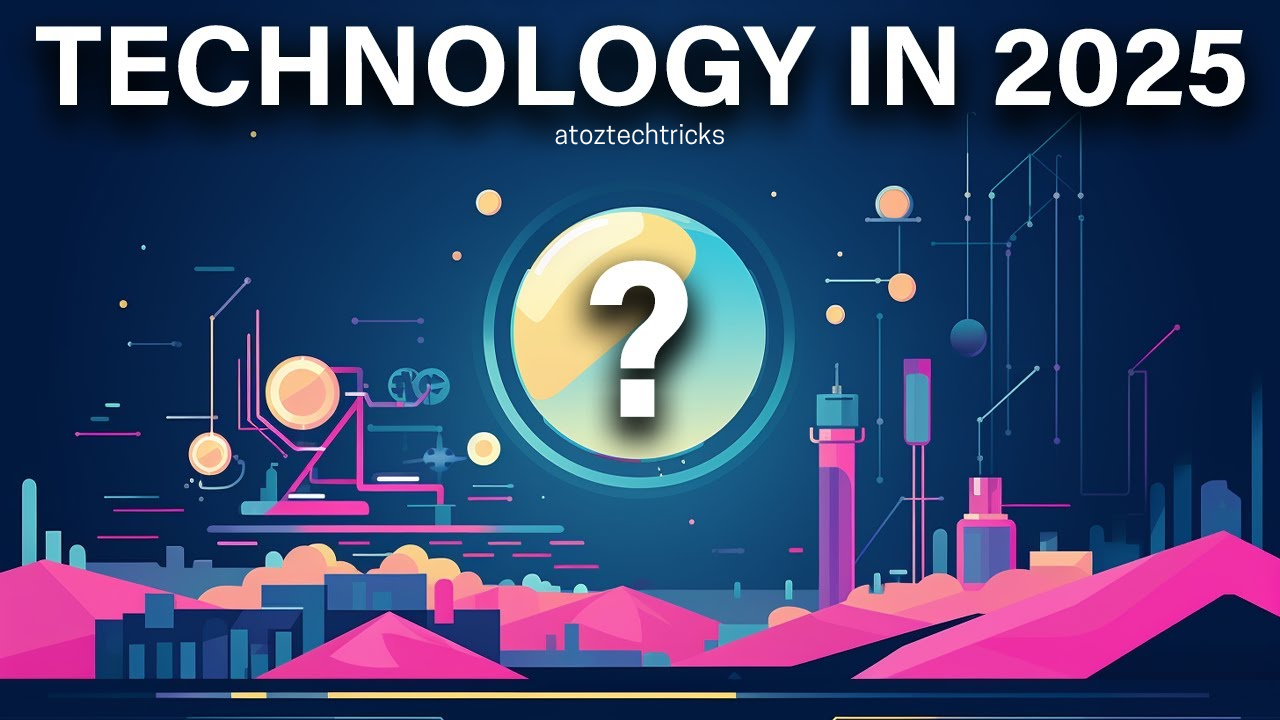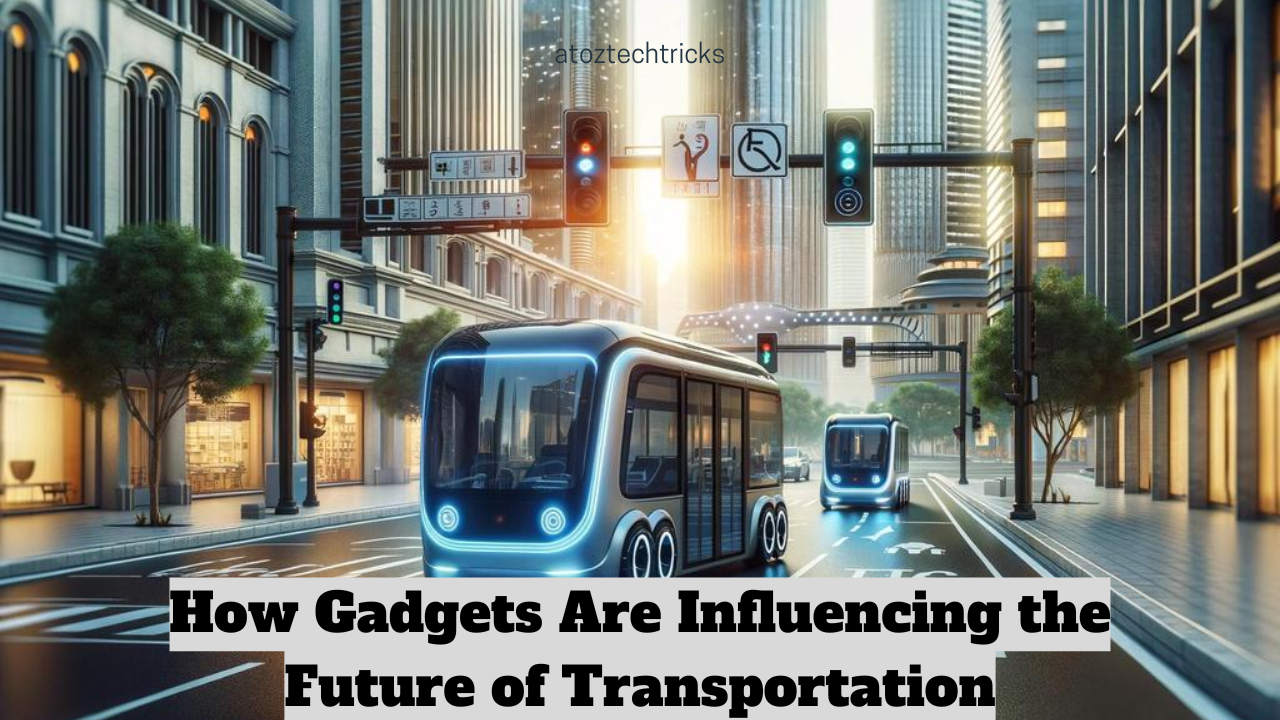Augmented Reality (AR) is rapidly evolving from a futuristic concept into an everyday technology. Unlike Virtual Reality (VR), which immerses users in a completely digital environment, AR overlays digital information into the real world. This blending of the digital and physical worlds opens up a wide range of possibilities for entertainment, education, healthcare, and beyond. As we look to the future, several groundbreaking AR gadgets are set to revolutionize how we interact with our surroundings. In this article, we’ll explore some of the most exciting AR gadgets to watch out for, examining their potential impacts and the technologies driving their development.
1. AR Glasses: The Next Big Thing
1.1. Overview
AR glasses are perhaps the most anticipated AR gadgets. Unlike the bulky headsets of the past, modern AR glasses aim to be sleek and stylish, resembling traditional eyewear. These devices project digital information directly onto the lenses, allowing users to view and interact with augmented content seamlessly.

1.2. Leading Contenders
Several companies are making significant strides in AR glasses technology:
- Apple Vision Pro: Apple’s entry into the AR space, Vision Pro, promises a high-resolution display with spatial audio, gesture control, and advanced environmental sensing. The device is expected to integrate deeply with Apple’s ecosystem, offering a range of applications from immersive gaming to productivity tools.
- Microsoft HoloLens 3: Building on the success of its predecessors, HoloLens 3 aims to deliver an improved field of view, enhanced resolution, and more intuitive controls. It is expected to play a crucial role in enterprise applications, including remote assistance and collaborative work.
- Google Glass Enterprise Edition: While Google Glass initially failed to capture consumer interest, its Enterprise Edition has found success in industrial applications. The upcoming iteration promises better performance, longer battery life, and improved integration with enterprise software.
1.3. Implications
AR glasses have the potential to transform numerous industries. In education, they could offer interactive learning experiences, while in healthcare, they might assist surgeons with real-time data overlays during procedures. In everyday life, AR glasses could provide navigation assistance, translate foreign languages in real time, and even offer contextual information about landmarks and products.
2. AR Contact Lenses: The Ultimate Discreet Experience
2.1. Concept and Development
AR contact lenses represent the pinnacle of discreet augmented reality. These lenses, still in the prototype stage, aim to deliver AR experiences directly on the surface of the eye. By embedding micro-displays and wireless technology into contact lenses, developers hope to create an experience that is as seamless as it is unobtrusive.
2.2. Current Innovations
- Mojo Vision: Mojo Vision’s smart contact lenses feature a micro-LED display that projects information directly onto the wearer’s retina. These lenses are designed for applications such as real-time notifications, navigation, and health monitoring.
- Innovega: Innovega is working on a combination of AR contact lenses and smart glasses. The contact lenses act as a display, while the glasses provide processing power and additional functionality. This hybrid approach aims to offer the best of both worlds in terms of immersion and usability.
2.3. Challenges and Potential
While AR contact lenses offer exciting possibilities, they also face several challenges. Ensuring comfort and safety is crucial, as the lenses will be in direct contact with the eyes. Additionally, developing the necessary technology to provide high-quality AR experiences in such a small form factor is a significant technical hurdle. Despite these challenges, successful implementation could lead to a new era of hands-free, immersive AR experiences.
3. AR Headsets: Enhancing Immersive Experiences
3.1. Advanced AR Headsets
AR headsets are more immersive than AR glasses, offering a full field of view with high-resolution displays and spatial audio. These devices are often used for more complex applications, such as gaming, training, and design.
3.2. Notable Examples
- Magic Leap 2: Magic Leap’s AR headset aims to deliver high-fidelity visuals and spatial computing capabilities. The device features advanced sensors and a wide field of view, making it suitable for applications in design, education, and entertainment.
- Meta Quest Pro: Meta’s Quest Pro is designed for both AR and VR experiences, offering high-resolution displays, eye tracking, and advanced controllers. It aims to be a versatile device for both immersive gaming and productivity tasks.
3.3. Applications and Impact
AR headsets have a wide range of applications. In gaming, they can create immersive worlds that blend with the real environment. In professional settings, AR headsets can assist with complex tasks by providing real-time data and visualizations. For example, engineers might use AR to visualize and manipulate 3D models of machinery, while medical professionals could use it to simulate surgical procedures.

4. AR Smartphones: Bridging the Gap
4.1. The Role of Smartphones
While dedicated AR devices are gaining traction, smartphones continue to play a significant role in AR. Modern smartphones are equipped with powerful processors, high-resolution cameras, and advanced sensors that enable a range of AR applications.
4.2. Key Developments
- Apple iPhone with LiDAR: Recent iPhone models include LiDAR sensors, which enhance AR capabilities by providing accurate depth perception. This allows for more realistic and interactive AR experiences, such as virtual home décor and enhanced gaming.
- Android Devices with ARCore: Google’s ARCore platform enables a range of AR experiences on Android devices. With features like motion tracking, environmental understanding, and light estimation, ARCore supports various applications, from interactive shopping experiences to educational tools.
4.3. Future Prospects
As smartphone AR technology continues to advance, we can expect even more sophisticated applications. Enhanced sensors and improved processing power will enable more immersive and realistic AR experiences. Additionally, as AR becomes more integrated into everyday devices, the technology will become more accessible to a broader audience.
How to Choose the Right Gadgets for Your Needs: A Buyer’s Guide
5. AR Wearables: Expanding the Horizons
5.1. Overview of Wearables
AR wearables encompass a range of devices designed to provide augmented experiences while being worn on the body. This category includes not just glasses and contact lenses, but also items like AR gloves and clothing.
5.2. Innovations in AR Wearables
- HaptX Gloves: HaptX’s AR gloves provide haptic feedback, allowing users to feel virtual objects as if they were real. These gloves are designed for applications in training, gaming, and design, offering a more immersive experience by simulating touch and texture.
- AR Clothing: Several companies are exploring the integration of AR technology into clothing. For example, jackets with built-in displays and interactive elements could provide real-time information, such as weather updates or navigation prompts.
5.3. Potential Impact
AR wearables have the potential to transform various aspects of life and work. In training and simulation, haptic feedback gloves can provide realistic experiences that enhance learning and skill development. In everyday life, AR clothing could offer a new way to interact with information and media, making technology more seamlessly integrated into our daily routines.
6. AR in the Automotive Industry: Driving the Future
6.1. AR-Enhanced Vehicles
The automotive industry is increasingly incorporating AR technology into vehicles to improve safety, navigation, and driver assistance. AR can provide real-time information on the windshield or dashboard, enhancing the driving experience.
6.2. Leading Innovations
- Augmented Reality Dashboards: Companies like BMW and Mercedes-Benz are developing AR dashboards that display navigation information, speed, and other critical data directly on the windshield. This allows drivers to access important information without taking their eyes off the road.
- Heads-Up Displays (HUDs): HUDs project essential driving information onto the windshield, creating an AR layer that helps drivers stay focused on the road. These displays can show navigation prompts, speed limits, and collision warnings.
6.3. Benefits and Challenges
AR in the automotive industry offers several benefits, including enhanced safety through improved situational awareness and more intuitive navigation. However, there are challenges to address, such as ensuring that AR displays do not distract drivers and integrating the technology seamlessly with existing vehicle systems.

7. AR in Healthcare: Revolutionizing Patient Care
7.1. Medical Applications
AR is making significant strides in healthcare, offering new ways to visualize and interact with medical data. From surgical planning to patient education, AR has the potential to improve outcomes and streamline processes.
7.2. Notable Examples
- Surgical Visualization: AR can provide surgeons with real-time overlays of critical data during procedures, such as 3D models of organs and tissues. This enhanced visualization can improve precision and reduce the risk of complications.
- Patient Education: AR applications can help patients understand their conditions and treatment options by visualizing medical information interactively and engagingly.
7.3. Future Developments
As AR technology continues to advance, we can expect further innovations in healthcare. Enhanced imaging techniques, improved data integration, and more intuitive interfaces will contribute to better patient care and more effective medical procedures.
8. AR in Education: Transforming Learning
8.1. Interactive Learning
AR has the potential to transform education by making learning more interactive and engaging. By overlaying digital content onto the physical world, AR can create immersive learning experiences that enhance understanding and retention.
8.2. Examples of AR in Education
- Virtual Field Trips: AR can take students on virtual field trips to historical sites, museums, or even distant planets, providing an immersive learning experience that goes beyond traditional textbooks.
- Interactive Textbooks: AR-enabled textbooks can display interactive 3D models, videos, and animations, making complex subjects easier to understand and explore.
8.3. Challenges and Opportunities
While AR offers exciting possibilities for education, there are challenges to overcome, such as ensuring that the technology is accessible to all students and integrating it effectively into curricula. However, the potential benefits in terms of engagement, understanding, and accessibility make AR a promising tool for the future of education.
The future of Augmented Reality is bright and full of potential. From AR glasses and contact lenses to wearable devices and applications in various industries, the technology is set to transform how we interact with the world. As advancements continue, we can expect AR to become an integral part of our daily lives, enhancing everything from entertainment and education to healthcare and transportation.
While there are challenges to address, such as ensuring comfort, safety, and seamless integration, the ongoing development of AR gadgets and applications promises to bring about a new era of digital interaction. As we look forward to these innovations, it’s clear that AR has the power to redefine our relationship with technology and the world around us.



